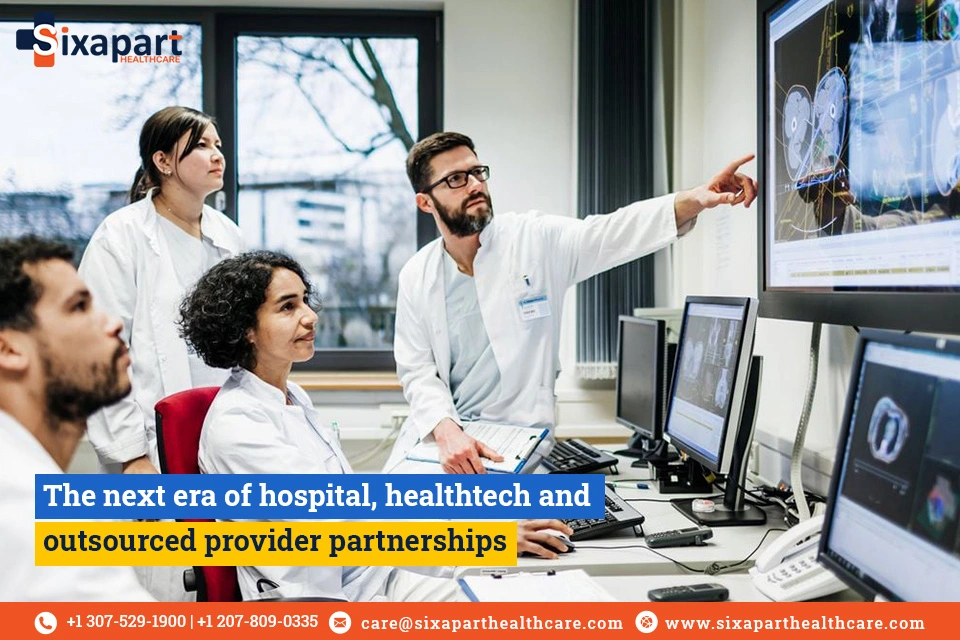The next era of hospital, healthtech and outsourced provider partnerships
Article By: Kerry Jessani
Blog Source From : https://www.healthcaredive.com/

Heading into 2024, healthcare leaders are confronting competing headwinds as they seek to drive results and tangible improvements across their organizations. The challenges of ongoing wage pressures, staff shortages, inefficient processes and reimbursement tightening are well-documented. All the while, nearly four years after the onset of the COVID-19 pandemic, the bar is even higher for system leaders to act with the urgency and decisiveness they demonstrated in early 2020.
Based on our conversations with healthcare leaders across the industry, we’ve distilled how they are prioritizing strategic initiatives for the year ahead, including integrating innovative technologies across the continuum of care, improving clinicians’ experience and delivering better care outcomes for patients.
Creating better experiences through innovation
The most impactful leaders continue to lean into collaborations with key technology partners to remain competitive, introduce bespoke solutions, and capture and implement key learnings quickly. Effectively outsourcing specific disciplines and services allows leaders to set a culture of continuous improvement while driving sustainable cost structures.
For example, healthcare organizations possess massive quantities of data that remain underutilized, and they can greatly benefit from the application of artificial intelligence (AI) and machine learning (ML). This technology can help streamline the repetitive, mandated tasks and protocols required for delivering effective care.
On the clinical side, AI and ML are proving to be increasingly effective in leveraging historical data to diagnose conditions earlier and with more accuracy. These technologies are rapidly evolving and help with 24/7 virtual care via chatbots, medication adherence reminders and tracking, remote patient monitoring, and more. Ultimately, enhancing both the patient and clinician experience helps improve outcomes, reduce re-admissions and boost hospital margins.
From the administrative perspective, these tools can help alleviate staffing shortages and minimize errors. Leveraging AI to automate coding, clinical workflow support, analytics and patient note-taking can free up significant capacity for clinicians to spend more time supporting patients.
Building strategic relationships across the healthcare ecosystem
Increasingly, partnerships with non-acute providers offer a focus on developing comprehensive care ecosystems. Hospitals are increasingly realizing they cannot be everything to everybody. Tapping into partners who are far nimbler and better suited to run specific aspects of care including surgery centers, multi-specialty platforms, urgent care and in-home care can be a strategic advantage for hospitals.
Ensuring continuity and clarity in a patient’s care journey across integrated partnerships has proven to be instrumental in delivering customized care. Patients want more personalized, end-to-end care with transparent pricing and better interoperability across care settings.
Similarly, patients expect more when it comes to digital payment offerings and rank a smooth payment experience as a top priority. By automating and maintaining a user-friendly payment portal, a health system can significantly reduce administrative costs and increase cash flow.
Merging patient priorities with operational objectives
As leaders work to incorporate digital-first solutions, improved outsourced capabilities and lessons learned through the pandemic, they should establish strategic alliances that will improve both patient and clinician experiences, as well as operations. It is critical to initiate these partnerships with clear objectives, accountability and communication, all while remaining flexible to pivot as needed.
Engaged patients, employees and communities are crucial to building a stronger foundation of access, affordability and equality in care delivery. Over time, the integration of innovative technologies, partnerships and solutions have the ability to advance the healthcare industry in its quest to improve the experience for all.

